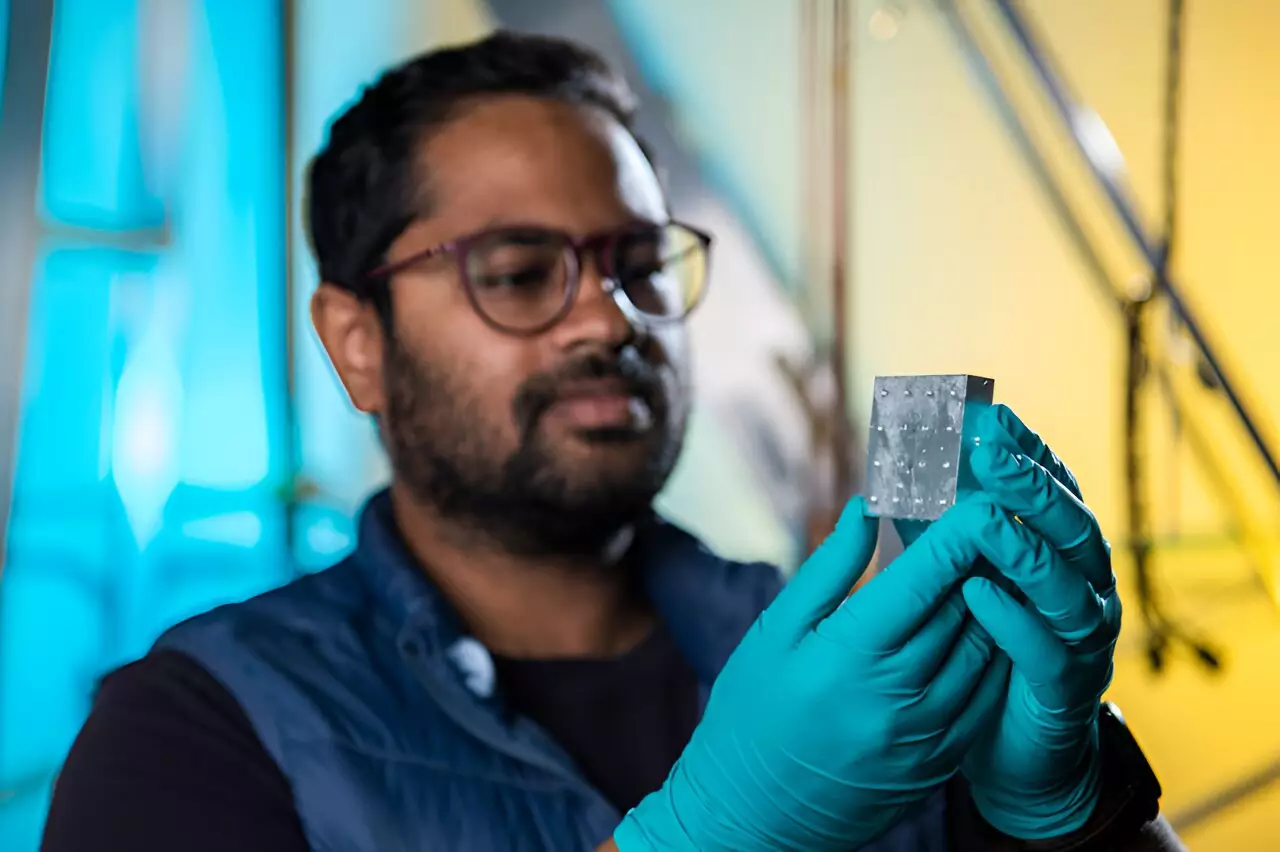Dark matter remains one of the most perplexing enigmas in contemporary astrophysics and cosmology. While it constitutes about 27% of the universe, its existence is inferred solely through gravitational effects that spare any direct observational evidence. This gap in our understanding underscores the challenge faced by scientists who strive to decipher the secrets of the cosmos. Instead of seeing dark matter, researchers are compelled to listen for subtle signals—light generated indirectly through interactions with visible matter. The challenge lies in the extreme weakness of these signals, which often remain undetected in the backdrop of noise generated by the universe itself.
The Power of Quantum Science
Tonight’s breakthrough at the Fermi National Accelerator Laboratory and the University of Chicago introduces an exciting paradigm shift: harnessing quantum phenomena to enhance the pursuit of dark matter detection. Researchers unveiled techniques that increased the sensitivity of their particle detectors by a factor of 2.78, a leap forward that promises to accelerate the hunt for dark matter. By employing cutting-edge quantum techniques, scientists are not just tackling a singular problem; they are laying the groundwork for broader advances within quantum information science—an interdisciplinary field that has implications extending far beyond theoretical frameworks.
At the heart of this innovation is the synergy between quantum mechanics and experimental science. The researchers, led by University of Chicago graduate student Ankur Agrawal, have opened doors for future studies that could hasten the unraveling of dark matter’s enigma. This work showcases how quantum properties can be manipulated, signaling a profound intersection of fundamental physics and practical applications like quantum computing.
The Experiment: A Deep Dive into Quantum States
The experimental design was ingeniously crafted, leveraging superconducting qubits to create a microwave cavity in a unique quantum state known as the Fock state. This meticulous preparation allowed the researchers to enhance their detection capabilities, making it increasingly possible to perceive the subtle movements of dark matter. The team’s approach involved stimulating the emission of photons—a process akin to how lasers operate. By coaxing the cavity into an excited state, they significantly boosted the odds of detecting photon interactions caused by dark matter traversing through the experimental setup.
This experiment is not merely a technical achievement; it resonates with foundational principles of quantum mechanics. As Agrawal aptly noted, the results reaffirm classic lessons learned in the realm of quantum physics. What could be seen as a mere academic exercise is actually an exquisite demonstration of theoretical concepts transitioning into tangible scientific advancements.
Noise Reduction: A Fundamental Challenge
One significant hurdle in detecting faint signals is the overwhelming background noise that drowns out the desired data. The team adeptly addressed this issue by employing a dilution refrigerator to lower the cavity temperature to a mere one-hundredth of a Kelvin. This ultra-cooling dramatically reduces thermal photons emitted from the surrounding environment, refining their measurement process. Such precision engineering bolsters the sensitivity of the experiment, allowing them to filter out excessive noise that typically obscures vital signals.
Akash Dixit, a key member of the research team, reiterated the importance of this reduction strategy, noting how maintaining the integrity of the photon during measurement is crucial. By allowing photons to be measured multiple times without destruction, the team was able to increase the fidelity of their observations, marking a salient advancement in experimental physics.
The Implications for Fundamental Science
Beyond the apparent implications for dark matter detection, this research represents a monumental stride in our understanding of the universe’s fundamental fabric. As scientists explore the fringes of known physics, techniques developed in this study may also facilitate investigations into other mysterious phenomena—ranging from dark energy to the subtleties of quantum fields.
This interplay between dark matter research and quantum mechanics could catalyze further innovations, inspiring subsequent studies that challenge existing paradigms. Just as the swing must be set into motion before it can be pushed higher, these foundational techniques prime the experimental landscape for future explorations. The findings not only save time and resources but also widen the horizon for other scientific inquiries—an exciting era of discovery awaits.
In the grand tapestry of cosmology and particle physics, the emerging integration of quantum information science hints at possibilities previously confined to the realm of science fiction. This collaborative effort between theoretical principles and advanced technology paves the way for a transformative journey into the unknown, reaffirming humanity’s age-old quest for comprehension amid the cosmos’ profound mysteries.

